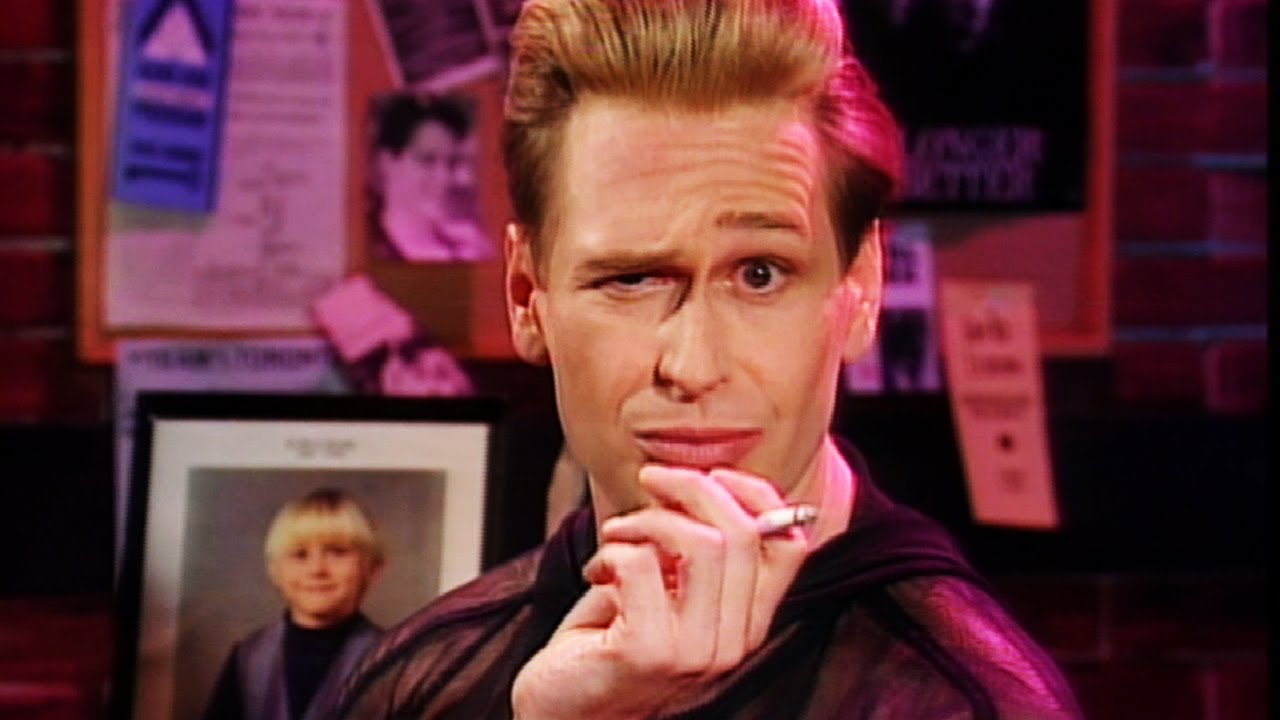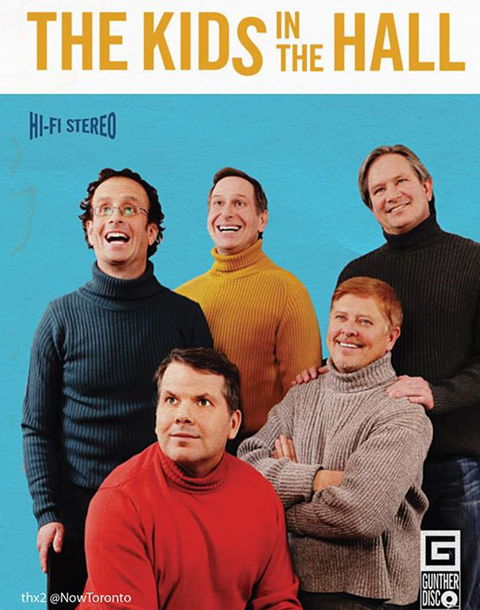 In the late ’90s when I finally convinced my mom I was too old for a babysitter, she left me home with my best friend, the television. In those days, daytime TV was broken down into two major categories: trashy talk shows and reruns. These were the glory days of Jerry Springer and Ricki Lake (the eternal paternity-tester Maury Povich was actually the more innocuous of the bunch), so my interest quickly waned.
In the late ’90s when I finally convinced my mom I was too old for a babysitter, she left me home with my best friend, the television. In those days, daytime TV was broken down into two major categories: trashy talk shows and reruns. These were the glory days of Jerry Springer and Ricki Lake (the eternal paternity-tester Maury Povich was actually the more innocuous of the bunch), so my interest quickly waned.
Fortunately, we’d just gotten an expanded cable TV package that included one channel that was, far and away, the cool kid channel. If you didn’t watch Comedy Central, or at least South Park, when I in sixth grade, you were a huge loser. So, what started as the Eternal Acceptance Quest that’s been passed down from kid-generation to kid-generation soon sparked a near obsession with the station’s daytime programming. An oasis from the mundane soap operas and Montell!
What I discovered during those summers at home without parental supervision has probably shaped (or, some would say, warped) my sense humor more than anything else. And that blame can mainly be placed on five guys collectively known as the Kids in the Hall, Canada’s comedy export to the US in the form of their five-season sketch comedy show originally aired contemporaneously on HBO and rerun on Comedy Central after the series ended.
It’s strange; I can trace my love of the KITH from “this is so weird, why is there not a Saturday Night Live marathon on?” to “oh my God, two episodes is not enough! Fuck you, Win Ben Stein’s Money!” in an almost linear fashion, but one thing’s for sure: once I was hooked, I was hooked. These cross-dressing, cabbage-wearing, politely devil-worshiping weirdos were definitely corrupting my 12-year-old suburban brain big time, but, as it turns out, in the best way possible.
They remained a touchstone of comedy for me throughout my teen and early adult years, probably more subconsciously than front-of-brain. However, last month I jumped at a chance to finally see my favorite troupe of all time (well, tied with Monty Python, of course) live. Scoring a last-minute ticket to the KITH’s late show at Town Hall in New York City was akin to, well, not winning the lottery, but something more realistic and a few rungs down on the ultimate fulfillment ladder. Still, I was psyched.
I went with a few friends (and a couple Canadians) who’d seen the KITH live before. They tried to prep me for the show, but I’m the type who thinks people who post/talk about/enjoy spoilers are the worst, so I avoided all conversation until showtime. I knew the live performance would include a mixed bag of old favorite characters and new material, which, to some fans that expect the Chicken Lady or Cathy & Kathy might be slightly disappointing, but for me, it was refreshing. In interviews, Bruce McCulloch often uses the analogy of the KITH shirking a Beach Boys-like existence: simply coming onstage and playing their hits. The KITH keep creating, often generating new material in laughably short spans of time, workshopping it, then touring it.
Honestly, for someone like me who, okay, wasn’t around in the early early days, or didn’t even see the show before it was in reruns, but has been on the KITH train a decent amount of time, the fact that the creative juices are still flowing in my favorite comedy troupe is almost the best part. As much fun as it would be to watch a parade of Head Crushers and Buddy Coles, the thrill of even watching the show in reruns was awaiting what the quintet would come up with next, their recurring characters being a bonus. (I still, however, hold out hope for a Simon and Hecubus resurrection, although Dave Foley has said he’ll never again don the tights to play Kevin McDonald’s “evil” manservant. Damn.)
Consider that when the KITH became cable’s counterculture darlings, they brought forth a comedic repertoire previously unseen. Yes, they dressed as women, but for the first time, merely the sight of a man in drag wasn’t the meat of the joke. None of them wore over-the-top makeup, or created caricatures of the women in question — it was easy to believe that, had the troupe included female members, the characters wouldn’t have been all that different. Whereas other sketch comedy shows of the time, and even today, strive for shock value often bordering on blatant sexism, the KITH treated their female characters like, well, people. And, in that way, they elevated comedy (whether they were trying to or not), rendering other comedians’ drag bits just plain unfunny.
Another unquestioned undercurrent of their comedy is and was gay culture. Scott Thompson was, perhaps, the very first openly gay comedian on a hit show, and his influence and importance on the troupe as a whole cannot be overstated. Typically taboo slurs that would warrant a punch in the face elsewhere peppered the material, effectively stripping them of their power and, dare I say, reclaiming them. Sketches featuring gay couples and queer storylines were just as prevalent and commonplace as skits with straight characters; Thompson’s martini-drinking, shit-talking, gay bar-owning Buddy Cole, an undisputed fan favorite, inspired not only an entire episode devoted to a plot involving Cole’s ski chalet and his longtime penpal Queen Elizabeth (another of Thompson’s most memorable roles), but also his own autobiography, Buddy Babylon. Cole is still very much part of the Kids — in their current stage show, the mere placement of a martini on a stool brings the crowd to a frenzy, even before Thompson walks out onstage.

As an overprotected child in a conservative, mostly white small town in Ohio, there’s no doubt that the Kids in the Hall helped to mold not only my sense of humor, but also broaden my views on social issues. Kind of like hiding vegetables in mac and cheese, I had no idea it was even happening. All I knew is that these guys were hilarious. Now, as something of a grown up, I can appreciate them not only on the basis of their comedy, but also because of the subconscious lessons they were serendipitously teaching a whole generations of kids being babysat by the television. Being gay is okay. Women are important, even when they’re men in dresses. Dark, oddball humor is welcomed, especially if it’s got a point. Intelligence has a place in comedy. And pretending to crush people’s heads in shifted perspective is really, really fun.
 The Kids in the Hall’s 2015 tour comes to an end on Friday at the very venue where I saw them perform back in May: Town Hall in New York. The first double-header was a sell out, and scheduling another so soon would be ambitious for any comedy troupe, but especially one that’s been around for 20 years. Though their outings are somewhat few and far between, their devoted fanbase never gives up hope of new KITH material. (Personally, I’d love to see a second season of their 2010 whodunnit miniseries Death Comes to Town.)
The Kids in the Hall’s 2015 tour comes to an end on Friday at the very venue where I saw them perform back in May: Town Hall in New York. The first double-header was a sell out, and scheduling another so soon would be ambitious for any comedy troupe, but especially one that’s been around for 20 years. Though their outings are somewhat few and far between, their devoted fanbase never gives up hope of new KITH material. (Personally, I’d love to see a second season of their 2010 whodunnit miniseries Death Comes to Town.)
This go-round was my first foray into the KITH live, but certainly won’t be my last. Their unique brand of comedy is fearless, honest, irreverent, wholly modern, and especially timeless. The reason they can put Buddy Cole onstage in both 1989 and 2015 is because he still holds impetus and has a message (and is still the controversial socialite he always was). In a way, the comedy of the Kids in the Hall reflect society in a way that shows not how far society has come, but how far it needs to go. Thankfully, they’ve been there pushing boundaries since the beginning, and continue to do so. It’s needed now more than ever.
To purchase tickets for the Kids in the Hall at NYC’s Town Hall, head over to Ticketmaster. Find out more about the troupe and their tour at kith2015.com.





Comments